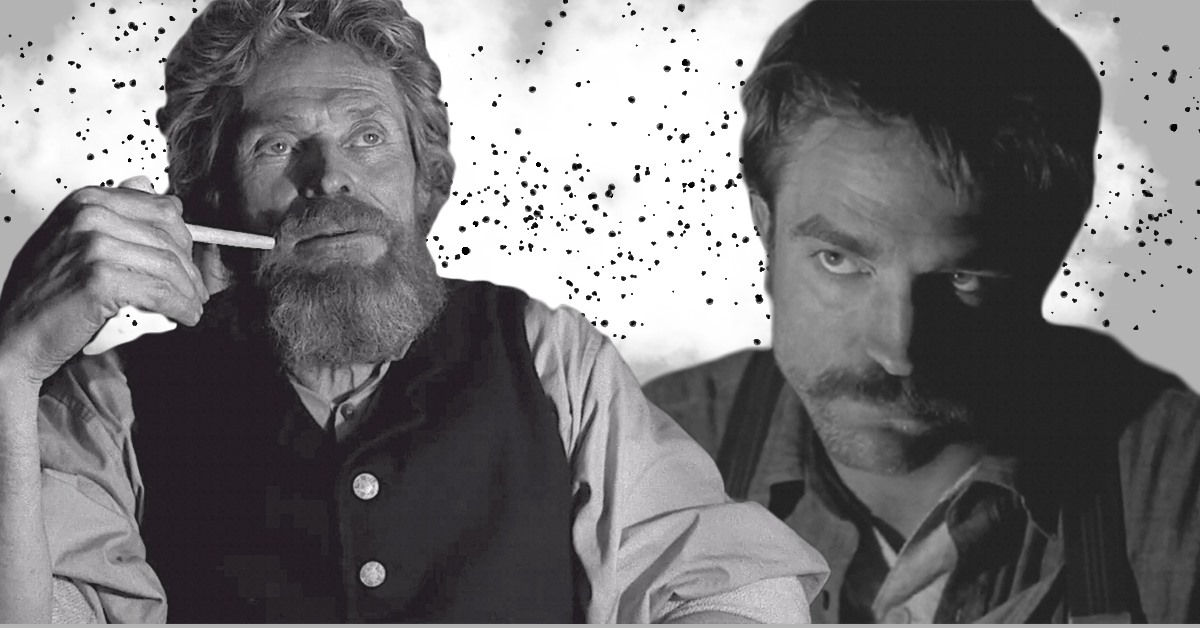The Lighthouse is Robert Eggers’s second directorial effort – following on from his acclaimed debut The Witch (2015) – and sees him continuing to master his particular brand of psychological horror while including some surprisingly funny moments.
The Lighthouse stars Willem Dafoe and Robert Pattinson as two lighthouse keepers posted on a remote island off the coast of Nova Scotia in the late 1890s. The film centres on the two characters as the isolation of the lighthouse tempts hostility and madness. What follows is equal parts intimate character study, dark comedy, psychological thriller and mythic allegory.
Defoe’s portrayal of the haggard old light keeper – pipe smoking, wise cracking, farting and drinking – is irresistibly eccentric, and stands with some of the actor’s greatest moments on film. Arguably more impressive is Pattinson’s performance as the newly appointed ‘wickie’. Lighthouse keepers were often referred to as wickies, because their job involved trimming the wicks. Pattinson masterfully portrays the younger, inexperienced wickie, as the contrast in personalities between the two constantly plays at his quiet and brooding nature. The Lighthouse skilfully muses on ideas of male friendship, masculine power, and sexuality in ways unexpected and intelligent.
For those familiar with the films of Ingmar Bergman, David Lynch and Jim Jarmusch, The Lighthouse will be a rewarding experience. The film also takes inspiration from more unexpected places; the poetry of American writer Sarah Orne Jewett, tales from Greek mythology, Lovecraftian horror and the eerie watercolours of Andrew Wyeth. Shot at a 1.19:1 aspect ratio in stunning black-and-white with the same Kodak 35 mm film used for Raging Bull, the cinematography is masterful. The juxtaposition of extreme close-ups and pensive tracking scenes are skilfully used to build tension throughout the film. As the film progresses, the viewer starts to question their own sanity as the lighthouse keepers’ perception of their surroundings become less clear. At times, the film threatens to overwhelm the viewer with this tension, but the use of comic relief in the form of fart jokes or sluggish insults allows an easier transition into the films more meditative scenes.
This ebb and flow neatly mirrors the dialogue written by Robert Eggers and his brother Max, which is sometimes both lyrical and brutally blunt within a single argument. The heavy accents can be hard to understand in the quieter moments of the film, but didn’t detract from the discourse often enough to lessen the intrigue of each character’s hazy motives.
For some, the lack of clear answers given by The Lighthouse may prove to be frustrating. But persevere, as Eggers’s hypnotic direction and pacing is always moments away from pulling you back into this gripping film. Individual interpretation was clearly intended by the director, and resulted in conversation long after the film’s conclusion. The Lighthouse radiates a mood ominous and spectral. It culminates in a hypnotic cinematic experience as brooding as the angry seas that feature so prominently.
4 ½ Seagulls out of 5
Words by Sam Beard and Ben Papasergio
Sam studies art history and enjoys gardening.
Ben studies engineering and is unsure why he’s currently reviewing movies.
Image courtesy of Joshua Cahill.

